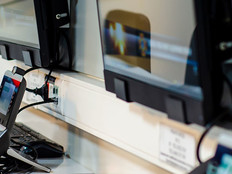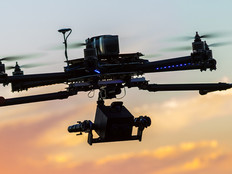State and Local Agencies Extend Citizen Services with Telepresence Via Video Tech
There is a growing trend in government municipalities to use video technology, in various ways, to improve the services they deliver to their citizens. These uses include, but are not limited to, telepresence services, live video streaming and 24x7 monitoring of key assets or locations for security purposes.
Many state and local agencies are starting to understand this. By employing these solutions governments can reduce travel and other costs through telepresence, monitor live events with drone video streaming and provide added security to building assets and locations with video surveillance and potentially save lives.
Telepresence Technology Makes It Like Being There
There’s a misnomer that telepresence includes all uses of video solutions. Actually. Telepresence provides one-to-one or one-to-many people to collaborate together via a videoconferencing network. The uses are numerous.
Around the country, state health organizations like the Georgia Department of Public Health are using telepresence technology to deliver improvements in healthcare, especially in remote areas far from major hospitals and clinics.
Remote counties in upstate New York, like Franklin County and St. Lawrence County, have engaged in telemedicine and telepsychiatry using medical contractors to provide clinical reviews of their incarcerated inmates decreasing travel costs and keeping the jail environment and medical providers more secure.
Of course, public safety agencies also make use of more traditional videoconferencing and telepresence solutions. Cisco Systems and CDW•G teamed up to deliver a turnkey offering for law enforcement and other public safety agencies to easily acquire and deploy telepresence technologies. The hosted-managed services video network offering is a public safety collaboration cloud that can be used for point-to-point or multipoint video calls by various departments with the county. Sold as a subscription service the network is accessed through the internet and allows clients to develop a telepresence network for minimal capital investment.
A large county on Long Island invested in the service providing the equipment to their police departments to deliver a countywide training and emergency response group. It is also used by county prosecutors to provide bail hearings within the newly reduced time windows imposed by legislation.
Live Video Streaming Provides an Eye in the Sky
Live video streaming provides increased situational awareness to those agencies employing the use of these technologies. Whether it’s at a large social gathering or an isolated rescue event live streaming by drones can help monitor any potential risks or provide a valuable response to save a life.
For example, the Chula Vista Police Department and Cape Aerial Telepresence are working together to send unmanned aircrafts (drones) ahead of police responding to emergency calls to test both the usefulness of advanced aerial footage and to determine how the drones should operate and fly in real-world operations. Some of the challenges that have surfaced are coordination of resources from multiple agency response to a singular event and making sure cellular network coverage is strong enough to transit the live video. The team has performed 282 flights so far, showing safe operations over 75 hours of flight time with no incidents, the publication Inside Unmanned Systems reports.
Counties in New York’s Capital Region like Albany, Schenectady and Rensselaer County are working closely together sharing best practices, resources and knowledge of the use of unmanned vehicles as the technology continues to grow. The streaming of this video back to mobile command centers or EOC’s is improving their response and collaboration with neighboring agencies.
Video Surveillance Helps Public Safety Agencies
City residents can see cameras popping up all over the place now and may wonder, “When was that camera affixed to the pole?” Communities are expanding their use of fixed video surveillance that was traditionally used to monitor buildings inside and outside entrances and vehicles entrances and now been pushed to the telephone phones in your neighborhood. This is a growing trend to improve the safety of citizens and assist law enforcement to crack down on those breaking the law.
Combine these systems with the increased use of in-vehicle and body worn cameras, and rest assured that if an event happens someone has it on video.
In North Carolina, the Surf City Police Department in 2017 announced a new “More Eyes to Deter Crime” community policing program, which encourages residents and business owners who have external surveillance cameras, to register their cameras with the police department.
The registration of surveillance camera systems can deter crime and assist the Surf City Police Department in overall crime prevention, the department argued. “When crimes occur nearby, people are not always aware that their system may have captured video that could help solve the crime, which can help keep the community safer,” a release from the department states. “This program will also aid in identifying nearby video surveillance locations that might have critical video evidence.”
The use of video technology comes is many shapes, forms and uses. It’s one of the fastest growing trends in the IT industry and municipalities are recognizing the benefits and uses saving constituents tax dollars and improving safety in the areas you live.
This article is part of StateTech's CITizen blog series. Please join the discussion on Twitter by using the #StateLocalIT hashtag.









